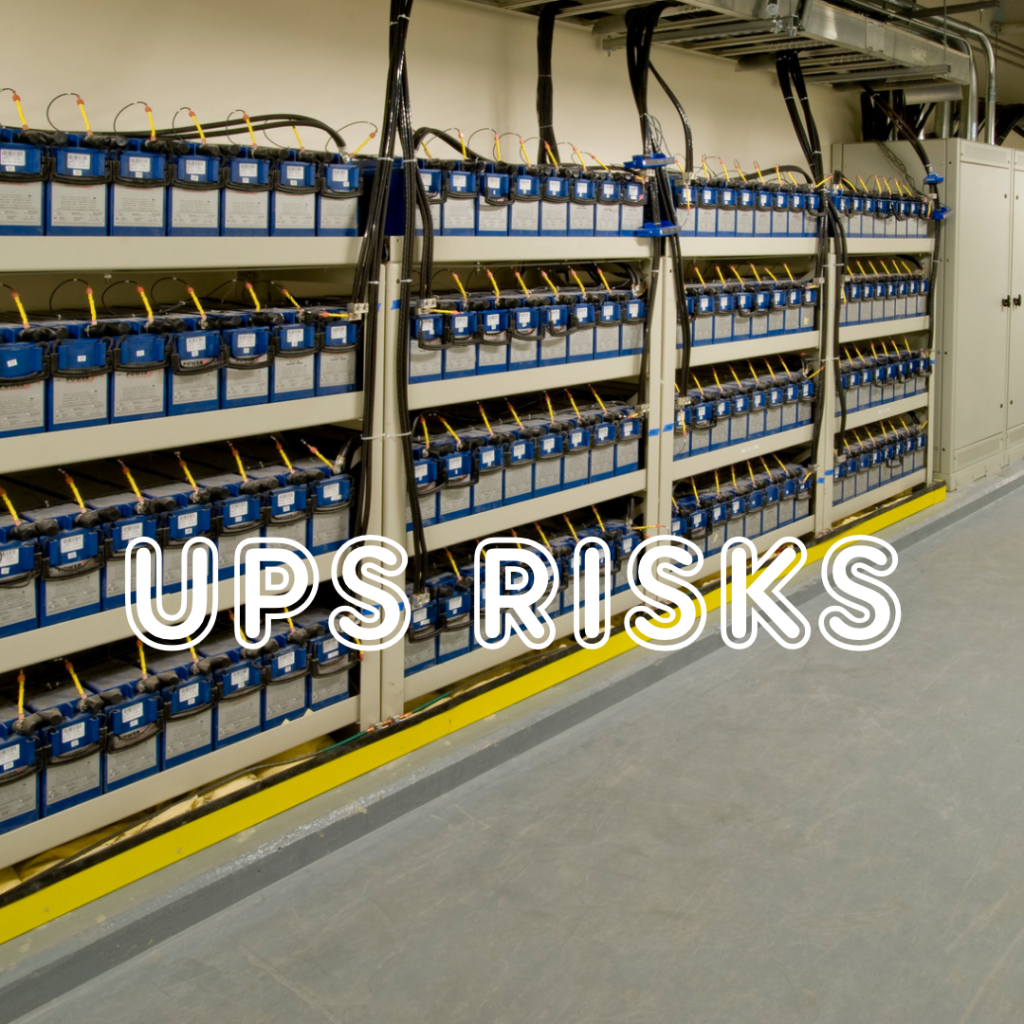Let’s discuss UPS systems in power and petrochemical plants. What can go wrong and how to manage charger and battery risks.

UPS systems (Uninterruptible Power Supply) play a critical role in power and petrochemical plants by providing backup power during outages or fluctuations in the main power supply. However, like any complex system, UPS systems can experience various issues that can lead to failures or risks. Some potential problems that can arise in UPS systems in power and petrochemical plants include:
- Battery failures: UPS systems rely on batteries to provide backup power. Battery failures can occur due to aging, inadequate maintenance, temperature extremes, or manufacturing defects. A battery failure can lead to a loss of backup power when it is most needed.
- Charger malfunctions: The charger is responsible for keeping the batteries charged and ready to provide backup power. If the charger malfunctions, the batteries may not receive adequate charging, leading to reduced capacity or premature battery failure.
- Overloading: UPS systems have a specified load capacity, and exceeding that capacity can overload the system, causing it to shut down or operate inefficiently. Overloading can occur due to increased power demands, improper load management, or equipment malfunctions.
- Cooling issues: UPS systems generate heat during operation, and proper cooling is necessary to maintain their performance and prevent damage. Inadequate cooling or ventilation can lead to overheating, reduced system efficiency, and increased risk of failures.
To manage charger and battery risks in UPS systems, the following strategies can be employed:
- Regular maintenance: Establish a comprehensive maintenance program that includes routine inspections, testing, and servicing of UPS systems. This includes checking battery health, charger functionality, and overall system performance.
- Battery monitoring: Utilize battery monitoring systems to track battery health and performance in real-time. This allows for proactive maintenance and replacement of batteries before they fail, minimizing the risk of unexpected downtime.
- Temperature control: Maintain suitable operating temperatures within the UPS system and battery storage area. Implement cooling systems, such as fans or air conditioning, to prevent overheating and ensure optimal battery performance and longevity.
- Redundancy: Consider implementing redundant UPS systems or backup power sources to mitigate the risk of a single point of failure. Redundancy ensures that even if one UPS system experiences a failure, there is still backup power available.
- Load management: Regularly assess the power demands of the plant and ensure that the load on the UPS system is within its specified capacity. Avoid overloading the UPS system and consider load shedding or power prioritization strategies during periods of high demand.
- Training and awareness: Provide proper training to operators and maintenance personnel to ensure they understand the UPS system’s operation, maintenance requirements, and potential risks. Promote a culture of safety and vigilance in managing UPS-related hazards.
It’s important to consult with UPS system manufacturers, industry experts, and relevant regulatory guidelines to ensure proper management of charger and battery risks specific to your power and petrochemical plant.
Let’s go deeper into risks associated with alarms for the chargers.
Alarms for chargers in UPS systems are essential for monitoring and alerting operators to potential issues or abnormalities. While alarms serve an important purpose in maintaining UPS system performance, they can also introduce risks if not properly managed. Here are some risks associated with alarms for chargers in UPS systems and how to mitigate them:
- Alarm overload: If there are too many alarms triggered simultaneously or frequently, it can overwhelm the operators, leading to alarm fatigue or missed critical alarms. This can result in delayed response times or failure to address urgent issues promptly. To mitigate this risk:
- Prioritize alarms based on their criticality and potential impact on system performance or safety.
- Implement alarm management systems that consolidate and prioritize alarms, allowing operators to focus on the most important ones.
- Set alarm thresholds appropriately to reduce unnecessary or noncritical alarms.
- False alarms: False alarms can occur due to faulty sensors, misconfigurations, or transient events. False alarms can be disruptive and reduce the credibility of the alarm system, leading to complacency or disregarding alarms altogether. To mitigate this risk:
- Regularly calibrate and maintain sensors to ensure accurate measurements and minimize false alarms.
- Perform periodic checks and verifications to ensure alarm settings and configurations are correct.
- Implement alarm validation mechanisms that require confirmation or additional data before triggering an alarm.
- Inadequate alarm response: It’s crucial to have an effective response plan in place to address alarms promptly and appropriately. Failure to respond adequately can result in extended downtime, compromised system integrity, or safety hazards. To mitigate this risk:
- Establish clear standard operating procedures (SOPs) that outline the required actions for each type of alarm.
- Train operators on proper alarm response protocols and ensure they understand the severity levels and escalation procedures.
- Conduct regular drills or simulations to test alarm response effectiveness and identify areas for improvement.
- Lack of alarm system monitoring: Monitoring the performance and reliability of the alarm system itself is essential to identify potential issues or failures. If the alarm system itself malfunctions or fails, critical alarms may go unnoticed, leading to increased risks. To mitigate this risk:
- Implement alarm system monitoring tools that track the status and integrity of the alarm system components.
- Perform regular audits and inspections to verify that alarms are being properly recorded, displayed, and communicated to operators.
- Establish backup or redundant alarm systems to ensure continuous monitoring capability.
By addressing these risks associated with alarms for chargers in UPS systems and implementing appropriate mitigation measures, operators can enhance the effectiveness of their alarm systems and ensure timely response to potential issues, thereby improving overall system reliability and safety.